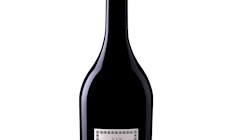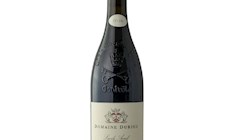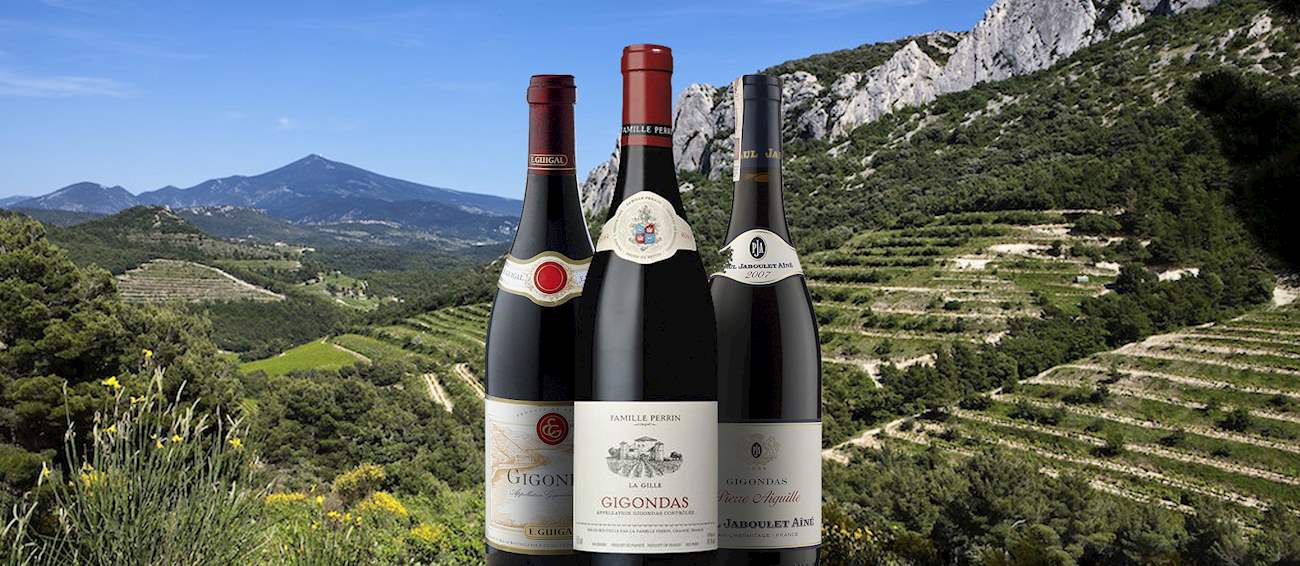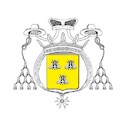Best Vaucluse Wine Appellation Types
Châteauneuf-du-Pape is the largest and the most important appellation in the southern part of the Rhône Valley that comprises of five communes. Most Châteauneuf-du-Pape wines are predominantly red blends, with a small percentage of whites.
Officially eighteen grape varieties are allowed, including different colors of the same grape variety. However, the most common are Grenache, Mourvèdre, Syrah, and Cinsault grapes. These rich wines can greatly differ in style, but they are mainly characterized by the spicy and earthy aromas of red berries, black pepper, tar, and leather.
THE BEST Châteauneuf-du-Pape Wine Appellations

Domaine de la Solitude
2021 Châteauneuf-du-Pape Vin de la Solitude Red
James Suckling - 99 points 2024

This powerful red wine hails from the southern Rhône, and it is mostly based on Grenache with small proportions of Syrah and Mourvedre. Often compared to the more famous Châteauneuf-du-Pape, these robust wines are characterized by their deep ruby color and complex aromas of ripe red and black fruit that are complemented by spicy and earthy nuances of licorice, cocoa, or chocolate. Gigondas is a full-bodied wine with powerful tannins that tend to mellow with age, resulting in more refined expressions.
They are an excellent match to braised dishes, stews, or casseroles.
Red wines from the Ventoux appellation are primarily based on Grenache, Carignan, Cinsault, Syrah, and Mourvèdre grapes. These ruby red, fruit-forward wines typically display aromas of ripe red fruit that are occasionally complemented by subtle notes of spices, licorice, or oak.
Due to their smooth texture and not-overpowering tannins, they can match a variety of dishes, but they perfectly pair with sausages, stews, and grilled red or white meat.
Vacqueyras is a French appellation located in the Rhône. Although white and some amount of rosé wines are produced in Vacqueyras, dry red wines are the hallmark of the region. These garnet-colored and rich wines are based on Grenache, but Syrah and Mourvèdre must make up at least 20 percent of the blend.
The primary notes include red and dark berries that are usually complemented by notes of preserved fruit, spices, and violets. Although often described as powerful and slightly robust, these wines will typically have a pleasant finish and unique, somewhat elegant character.
Rasteau is a French wine region that has a status of Côtes du Rhône Villages Cru. It is used for powerful dry red wines made from Grenache, usually with the addition of Mourvèdre and Syrah. Rasteau is also known for naturally sweet wines (vins doux naturel), made by adding pure grape spirit to fermented grape juice.
The region is located around the eponymous village in the Vaucluse department. Red Rasteau wines have a deep ruby color and intense aromas reminiscent of raspberries, currants, and blackberries. They will sometimes have hints of cocoa, spice, and coffee.
Muscat de Beaumes de Venise is a French appellation for dessert wines. The region is located in Southern Rhône, between Châteauneuf, Gigondas, and Vacqueyras. Initially, the appellation only included white wines, but red and rosé styles are now also permitted.
The wines are classified as Vins Doux Naturels, and are made from Muscat à Petits Grains. White wines from Beaumes de Venise wines remain the most popular and the best-selling style. They have a bright yellow color that tends to turn golden with age.
Rasteau is a French appellation in the southern Rhône that is best known for its Vins doux naturel, naturally sweet wines that come in several styles, mainly depending on how they are made and aged. The wines are made with fermented grape juice that is fortified with pure grape spirit.
All styles are made from Grenache (Noir, Blanc and Gris). The appellation includes the amber-colored doré style with distinctive honey, nutty, and apricot notes. The red type is also intensely aromatic with notes of ripe cherries, plums, and blackcurrants.
Best Vaucluse Wine Appellation Producers
Domaine de la Solitude is a historic winery located in Châteauneuf-du-Pape, France, owned by the Lançon family for multiple generations. The estate spans 37 hectares, organically farmed, with vines averaging over 100 years in age. Their portfolio includes red and white wines, with notable offerings such as the Réserve Secrète and Cuvée Barberini.
The winery emphasizes manual harvesting, stringent sorting standards, and precise winemaking to produce wines rich in structure, color, and aroma.
AWARDS

James Suckling - 99 points
2024
BEST Domaine de la Solitude Wines
Founded in 1976 by Paul Durieu, the winery was taken over in the early 2000s by his sons, Vincent and François, who brought modernity and elegance to the winemaking process. The winery practices sustainable agriculture, focusing on preserving the terroir and expressing the authentic characteristics of each wine.
Visitors are welcome year-round to the tasting room, housed in a building dating back to 1615, which once served as a barrel-making workshop.
AWARDS

James Suckling - 97 points
2023
BEST Domaine Durieu Wines
Best Vaucluse Wine Appellations
Châteauneuf-du-Pape Vin de la Solitude Red is a unique and historic cuvée crafted by Domaine de la Solitude as a tribute to the estate's legacy. Inspired by 18th-century winemaking techniques, this wine is made from a blend of traditional Châteauneuf-du-Pape varietals, including Grenache, Syrah, Mourvèdre, and others, using co-fermentation and extended maceration to create a distinctive profile.
On the nose, it offers a complex bouquet of ripe dark berries, black cherries, and plum, complemented by earthy undertones, hints of garrigue, and a touch of spice. The palate is full-bodied and richly textured, with fine-grained tannins and flavors of black fruit, licorice, and a subtle smoky note.
AWARDS

James Suckling - 99 points
2024
The 2020 Domaine Durieu Châteauneuf-du-Pape Cuvée Lucile Avril is a red wine made primarily from old-vine Grenache, complemented by 10% Mourvèdre and 10% Syrah. The grapes are sourced from vineyards with blue clay and limestone soils located on the plateau north of Châteauneuf-du-Pape.
Fermentation takes place in concrete tanks, and the wine is aged for 12 months in concrete vessels. It boasts complexity with notes of black raspberries, candied orange, raw meat, and licorice. This wine is a classic example of Châteauneuf-du-Pape, offering depth, complexity, and excellent aging potential.
AWARDS

James Suckling - 97 points
2023
TasteAtlas food rankings are based on the ratings of the TasteAtlas audience, with a series of mechanisms that recognize real users and that ignore bot, nationalist or local patriotic ratings, and give additional value to the ratings of users that the system recognizes as knowledgeable. TasteAtlas Rankings should not be seen as the final global conclusion about food. Their purpose is to promote excellent local foods, instill pride in traditional dishes, and arouse curiosity about dishes you haven’t tried.






